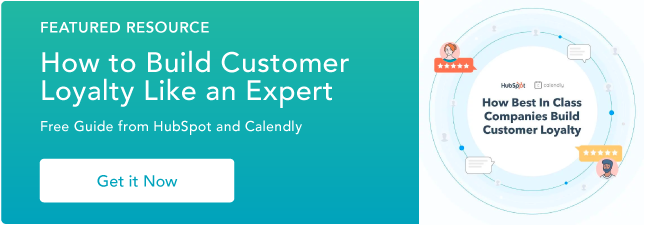How do you put a number on a feeling like loyalty? The goal of customer loyalty analytics is to do exactly that.

And with good reason. Just a 5% increase in customer retention correlates to around a 25% increase in profit, according to now-famous research by Bain & Company. Customers who have an emotional relationship with a brand have a 306% higher lifetime value, according to Motista. And according to data from Yotpo, 60% of customers will tell friends and family about a brand they feel loyal to.
So how do you put a number on loyalty? And how do you turn those numbers into growth? Below, we’ll take a look at different ways to measure loyalty, the formulas to use, and when you should use them.
How do you analyze customer loyalty?
- Customer Retention Rate (CRR)
- Net Promoter Score (NPS)
- Customer Satisfaction Score (CSAT)
- Customer Effort Score (CES)
- Repeat Purchase Rate (RPR)
- Audit reviews and social media
1. Customer Retention Rate (CRR)
Customer retention simply refers to the process of turning buyers into repeat customers. The metric for calculating it is the Customer Retention Rate or CRR.
Your CRR is one of your most important customer loyalty metrics. That’s because growing your business isn’t just about finding new customers but also satisfying the ones you already have.

Formula: (Customers at the End of the Period) - (New Customers Acquired) / (Customers at the Start of the Period) x 100 = CRR
Example: If you started a month with 50 customers, gained 20, but lost 10, your CRR would look like this: (60 - 20) / 50 x 100 = 80% retention.
When to use it: CRR is an important metric that can be calculated weekly, monthly, or yearly.
2. Net Promoter Score (NPS)
Net Promoter Score (NPS) is a simple way to measure how your customers feel about your company overall. It gives you a quick snapshot of how likely your customers are to return or look elsewhere.
You’ll find your NPS through a survey with only one question: “On a scale of 0-10, how likely are you to refer us to a friend or colleague?” Before you can calculate your score you’ll first need to sort your survey responses into these categories:
- (0-6) Detractors - These are unhappy customers who are not only at risk of leaving but may share their negative opinion with others.
- (7-8) Passives - These customers are generally indifferent to your brand. They may switch to a competitor if they see a better product or a better price.
- (9-10) Promoters - These customers aren’t just satisfied, they’re enthusiastic about your company. They’ll not only stick with you, they’ll also tell others about how great you are.
 Formula: (Number of promoters) - (Number of detractors) / (number of responses) x 100 = NPS
Formula: (Number of promoters) - (Number of detractors) / (number of responses) x 100 = NPS
Example: Let’s say out of 50 responses, 20 were promoters and 10 were detractors. (20 - 10) / 50 = 0.2 x 100 = 20% NPS
When to use it: NPS works great when tracked over time, so many businesses will send surveys yearly, quarterly, or every 6 months. Comparing how your score changes over time can help you see when you’re on the right (or wrong) track.
3. Customer Satisfaction Score (CSAT)
Customer Satisfaction Score (CSAT) measures how satisfied your customers are with a specific product, service, or experience. While your NPS looks at your overall brand, your CSAT focuses on specific, short-term happiness.
Like NPS, the CSAT is found through one question: “How satisfied are you with your experience today?” You’ll ask for a rating on a scale, usually 1-5 or 1-10. To get your CSAT score, add up all of the positive responses, divide them by the total number of responses, and then multiply by 100.

Formula: (Number of positive responses) / (Total number of responses) x 100 = CSAT
Example: If you received 50 responses, with 35 being positive, you’d have a CSAT of 70%. (35 / 50 = 0.7 x 100 = 70%)
When to use it: CSAT surveys are best used within a day or two after a customer interaction, such as a purchase, trial, or service request. This makes it easy to spot your wins and pinpoint your problems.
4. Customer Effort Score (CES)
Customer Effort Score (CES) takes a look at how easy or hard it is to deal with your business. That can mean making a purchase, using your product, or getting a problem solved. The easier it is for a customer to interact with you, the more likely they are to do it again in the future.
Your CES survey should begin “On a scale of _____” and then follow with a question specific to the interaction you want to test. Here are some examples:
- “How fast were you able to solve your problem today?”
- “How easy was it to sign up for a trial?”
- “How much do you agree with the statement: [website] made shopping easy?”

Formula: (Sum of all ratings) / (Total number of responses) = CES
Example: If 100 people rated you on a scale of 1-10, and the responses added up to 700, you’d have an average CES of 7. (700 / 100 = 7)
When to use it: Like CSAT, your CES is best used soon after a customer interaction, like a sale, free trial, or service request. Keep in mind that different businesses will naturally have different levels of effort. Instead of focusing on a benchmark score, pay attention to how it improves (or declines) over time.
5. Repeat Purchase Rate (RPR)
While most of the metrics above measure emotion or intention, your Repeat Purchase Rate (RPR) measures actual customer behavior. Your RPR shows the percentage of customers that make more than one purchase in a given period. Emotion-based scores can be useful, but nothing shows loyalty like putting your money where your mouth is.
Don’t confuse RPR with your Customer Retention Rate. Your CRR intentionally removes new customers so that it can focus on customers who stick with your brand. Your RPR includes anyone who makes multiple purchases.

Formula: (Number of repeat customers) / (Number of total customers) x 100 = RPR
Example: Say you’re a florist shop with 200 customers, and 150 of them are repeat customers. You’d have an RPR of 75%. (150 / 200 = 0.75 x 100 = 75%)
When to use it: Since you don’t have to worry about overwhelming customers with surveys, you can calculate your RPR as often as you like. Pick a schedule that makes the most sense for your product lifecycle. For example, a pizza shop would probably want to calculate its RPR more often than a car dealership.
6. Audit Reviews and Social Media
There’s no formula for this one, it’s just about paying attention. Listening and asking questions can be your greatest asset in boosting your customer loyalty program.
Social media is a great place to listen to customers. Since most of your customers are probably active on social media already, it can be a great resource for you to learn more about them. Find out what your customers like, which brands they follow, what products they buy, and who they talk to. You can also just ask a question and seek their opinion. This will not only give you ideas about how to reward them but also about what products or services will be ideal for them.
How to Use Customer Loyalty Analytics to Grow Your Business
This is the age of informed and proactive customers. The internet has provided customers with a variety of opportunities and choices. The challenge for businesses is that they can pick and choose from a wide selection brands. The rise of social media has also empowered them to share their experiences –- both positive and negative -- on social media.
And while this is good news for customers, it's great news for companies. It allows marketers to track online customer activity and develop strategies to keep their customers loyal to their brand.
1. Use your customer retention rate to guide your loyalty program.
There are many reasons why a customer might leave your company, so it's crucial to devise strategies to retain loyal customers.
By tracking your CRR over time you can get quick insights into the success of your loyalty program. A drop in your retention rate can be an early warning that you need to dig deeper into customer feedback.
On the other hand, a higher customer retention rate often signals a higher loyalty program enrollment rate. This means that the more customers remain loyal to your brand, the more you can reward them with your customer loyalty programs and create lifelong bonds. By developing meaningful relationships with your loyal customers, you can more effectively cultivate lifelong loyalty.
2. Understand your customers’ needs.
In the age where your customers are swamped with choices, there is no place for guesswork. You can't afford to trial and error strategies and wait to see what works. The better approach is to use data to understand your customer and their needs and work your product and customer activities around that.
Tools like Facebook Messenger and Twitter direct messages have shifted the entire customer care segment online. Customers now share their pains and delights on social networks like Facebook and Twitter.
These platforms are also great places to listen to your customer and hear what they are saying. Most customers are online and share their various experiences, questions, doubts, and feedback on these platforms.
It’s beneficial for companies to choose the right social media platforms for their businesses. Through these platforms, businesses can be in sync with what their customers are talking about, their likes, dislikes, and their requirements.
Understanding your customers' needs will go a long way toward defining your customer loyalty program strategy.
3. Prepare a customer segmentation analysis report.
An easy solution to finding the right customer for your brand is segmenting your customers.
Customer segmentation simply refers to the segregation of potential customers in a particular industry into categories based on various factors such as requirements, characteristics, and behavior.
Devising a strategy without proper segmentation is like taking a shot in the dark. It isn’t going to bring you the desired results. There are many benefits of customer segmentation:
- It helps with the efficient allocation of resources for attaining specific goals.
- It helps in staying ahead of your competitors by developing products that your customers need.
- It helps personalize your customer communications according to your targeted segment.
4. Track the Effectiveness of Your Customer Loyalty Program
There are several metrics you can use to measure customer loyalty programs. One of them is redemption rate, which is simply the percentage of rewards redeemed by your customer. A higher redemption rate means more customers are redeeming their loyalty program rewards, which means that your brand has more loyal followers.
Another important metric is the active engagement rate. To measure the redemption rate, you'll have to measure the engagement rate. It's simply the percentage of customers engaging with your loyalty program. Engagement is counted whenever a customer earns or spends points in the program. This will help you analyze if your current loyalty program is effective or not.
Participation rate is also another important metric to measure customer loyalty. This will help you to calculate the percentage of members who are actively participating in your customer loyalty program. This will help you to analyze how loyal your customers are, how well your loyalty program is performing, and how you can improve on the same.
All this data will help you to understand how loyal your customers are. With this information, you make the necessary tweaks to your programs to gain more loyalty. The idea is to turn your loyal customers into your brand advocates.
Turning Loyalty into Action
With all of the metrics you’ve gathered, you’ll have a deeper understanding of your company from your customers’ perspective. This will help you find your successes, fix your failures, and create loyalty programs that address both.
Editor's note: This post was originally published in May 2018 and has been updated for comprehensiveness.







![How & Why Loyalty Punch Cards Attract Customers to Your Brand [+ Examples]](https://www.hubspot.com/hubfs/customer-loyalty-punch-card_6.webp)



